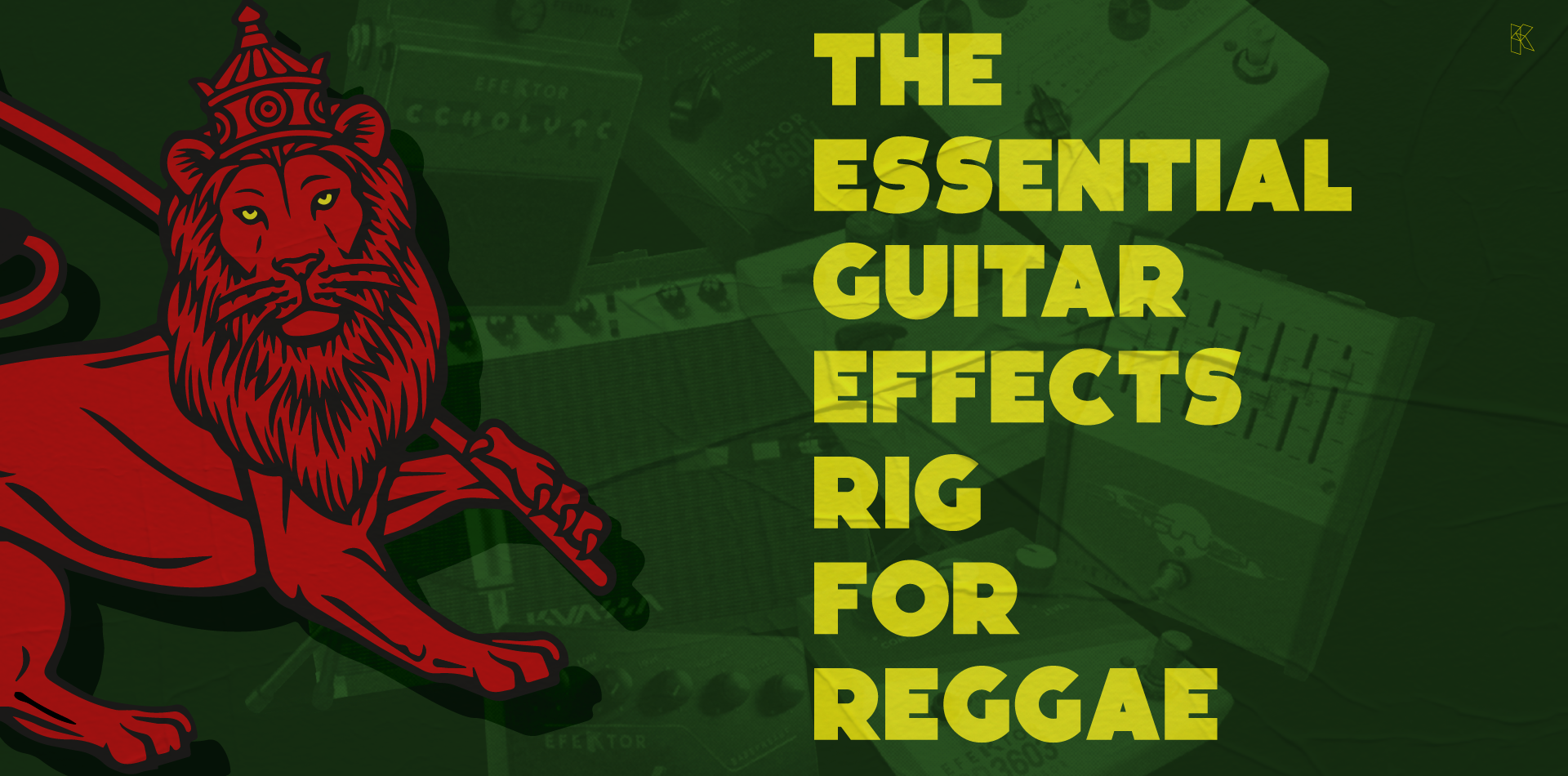
The sound of Reggae, Dub, and Ska has evolved over the decades, shaped not only by rhythm and melody but also by the creative use of effects.
These genres, born in the heart of the Caribbean, are defined by their unique sonic textures, rhythmic complexities, and spacious soundscapes, made possible by a carefully chosen palette of guitar, bass, and studio effects.Whether it’s the sharp “skank” of a reggae guitar or the cavernous echoes of dub, effects play an essential role in crafting these musical styles.
Here’s the guitar effects:
1. Delay: Syncopation and Rhythm in Dub
Delay isn’t just an effect in reggae and dub; it’s a rhythmic tool. Off-beat rhythms and one-chord stabs—the hallmark of reggae—benefit from perfectly timed echoes. In reggae, the delay is often synced to a 16th note, with the first echo falling on the upbeat, giving the music its signature syncopated feel. For a true dub sound, a darker, tape-like echo is preferred, creating that classic early-1970s vibe. Delays in dub are used to create space and movement, enhancing the track’s rhythm without overwhelming it.
Recommended gear: Kuassa’s Efektor Echolyte Delay, which excels in providing that dotted-eighth slapback delay essential for reggae stabs.
2. Reverb: Space and Depth
Reggae and dub are all about creating expansive soundscapes. Reverb is used to make instruments and vocals feel like they’re floating in space, contributing to the laid-back, hypnotic atmosphere. While spring and plate reverbs are often used for their vintage sound, cavernous reverbs are key in dub to make percussive elements like snares and hi-hats feel immersive and otherworldly. A snare drenched in reverb can instantly transport listeners to the smoky, echo-laden studios of Jamaica.
Recommended gear: Kuassa’s Efektor RV3604 Reverb for deep, spacious reverb tones that enhance the rhythmic backbone of reggae and dub.
3. Wah/Filter: Rhythm and Expression
In reggae, Wah effects aren’t just for show—they help shape the genre’s characteristic rhythmic feel. The rhythmic, percussive strumming, also known as “skank” or “chops,” can be accentuated with a wah pedal to give it a vocal-like articulation. While a traditional wah allows for manual expression, some guitarists prefer the auto-wah, which responds to pick dynamics, offering a more controlled “squawk” or “honk” depending on the player’s attack.
Recommended gear: Kuassa’s Efektor WF3607 Wah/Filter, which provides the perfect tonal sweep for both rhythm and lead guitar work.
4. Compressor: Tight and Punchy
Reggae’s groove-driven basslines and rhythm guitar chops rely heavily on compression to maintain consistency and punch. A compressor ensures that both the guitar and bass cut through the mix with definition. When applied to guitar, it creates a snappy, percussive tone crucial for those clean, crisp reggae stabs. On bass, compression adds punch without sacrificing the smooth, laid-back feel reggae demands. Compression can also help tame percussion and other rhythmic elements to achieve that tight, polished sound heard in classic reggae tracks.
Recommended gear: Kuassa’s Efektor CP3603 Compressor for its fast response, ensuring precise control over dynamics, whether on guitar, bass, or percussion.
5. Rotary Speaker and Modulation: Swirling Psychedelia
In both reggae and dub, the rotary speaker effect is used to add a swirling, psychedelic quality to tracks. This effect is particularly popular on organs, guitars, and even entire mixes, adding depth and stereo movement that brings a sense of motion to the music. Rotary effects, when paired with delay and reverb, can transport the listener into an immersive, spaced-out dub experience.
Recommended gear: Kuassa’s Efektor Rotarion provides classic rotary speaker modulation, adding texture and dimension to your mix.
6. Bass Effects: The Foundation of Reggae
The bass guitar is arguably the most important instrument in reggae, holding down the rhythm while other instruments fill in the gaps with polyrhythms. Reggae basslines are known for their catchy melodic riffs and octave jumps, with compression and overdrive used to shape their tone. A touch of overdrive can add warmth and depth to the bass without overwhelming the track, while a compressor ensures that the bass remains punchy and consistent throughout.
Recommended gear: Kuassa’s Efektor Bass Driver paired with the Pillar Power Amp delivers that thick, smooth bass tone, while the CP3603 Compressor keeps the dynamics under control.
7. One-Drop Rhythm and Muted Skank: The Rhythmic Backbone
At the heart of reggae lies the one-drop rhythm, where the emphasis is placed on the second or third beat of a measure, leaving the first beat unaccented. This rhythm is typically driven by the bass and drums, with the guitar or piano providing off-beat staccato chords known as “skank” or “chops.” The rhythm guitarist’s role is to deliver percussive, harmonically driven strumming, often using all six strings for a fuller sound. For this style, a clean amp setting is essential to preserve clarity and articulation.
Recommended gear: Amplifikation Vermilion by Kuassa, known for its clean, transparent amp tones, perfect for reggae’s percussive chops.
8. Snare, Toms, and Hi-Hat Effects: Building the Dub Sound
In dub, the creative use of effects on individual drum elements is what sets it apart from other genres. Reverb, delay, and echo are often applied to snare hits, toms, and hi-hats, creating a stretched, trance-like sound. These effects take a simple drum pattern and transform it into something much more dynamic, making the listener feel like they’re inside the rhythm itself.
Recommended gear: Kuassa’s Efektor Echolyte Delay and Efektor DL3606 Delay, along with Efektor RV3604 Reverb, are essential for creating this effect, providing the deep, immersive sound that dub is famous for.
From the iconic skank chops to the hypnotic echoes of dub, Caribbean music relies heavily on the creative use of effects to achieve its signature sound. Whether you’re trying to capture the laid-back vibe of reggae, the psychedelic textures of dub, or the punchy rhythms of ska, the right combination of delay, reverb, compression, and modulation will help you stay true to the genre while allowing for endless experimentation. With the right tools, you can craft your own slice of Jamaica, wherever in the world you might be.


